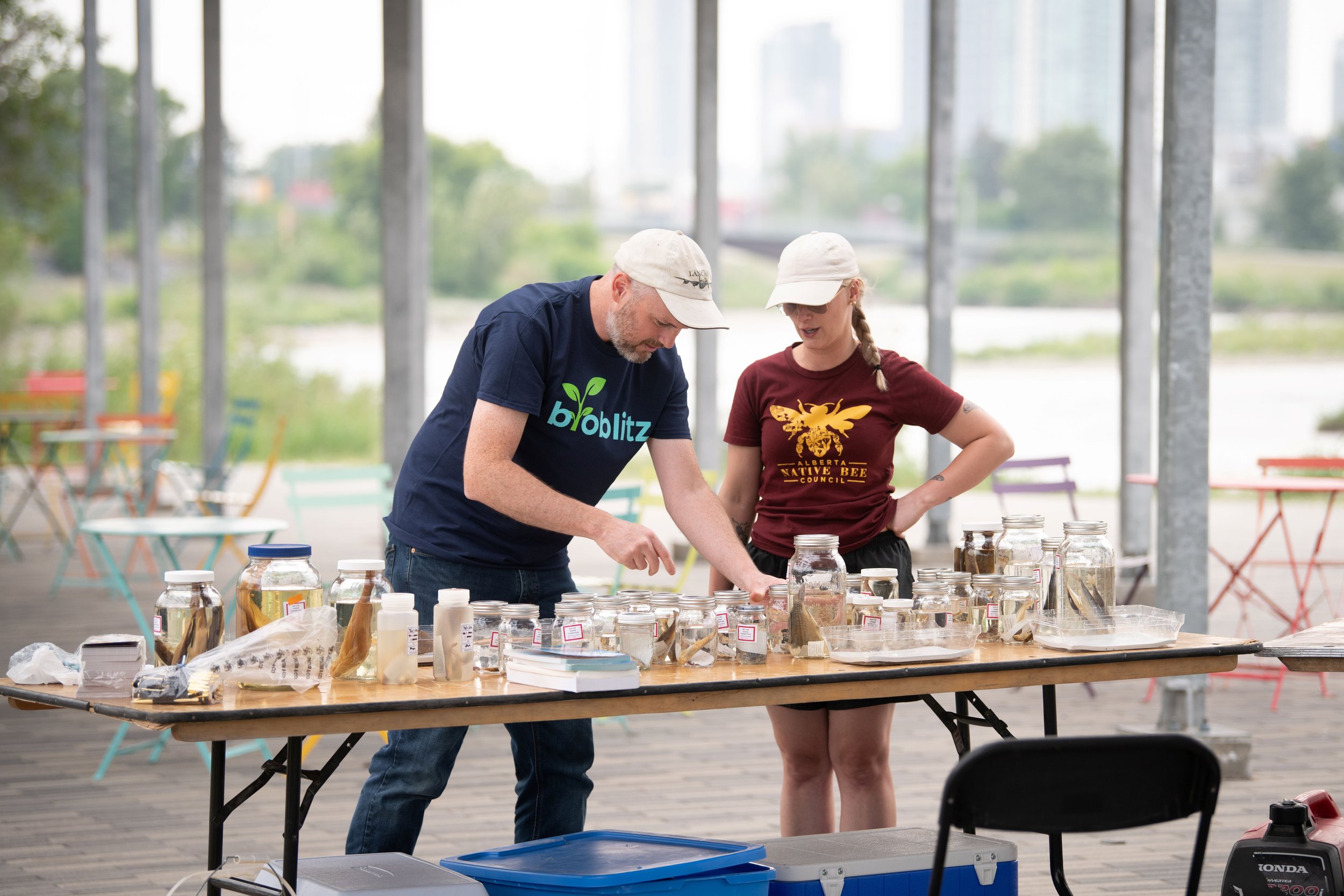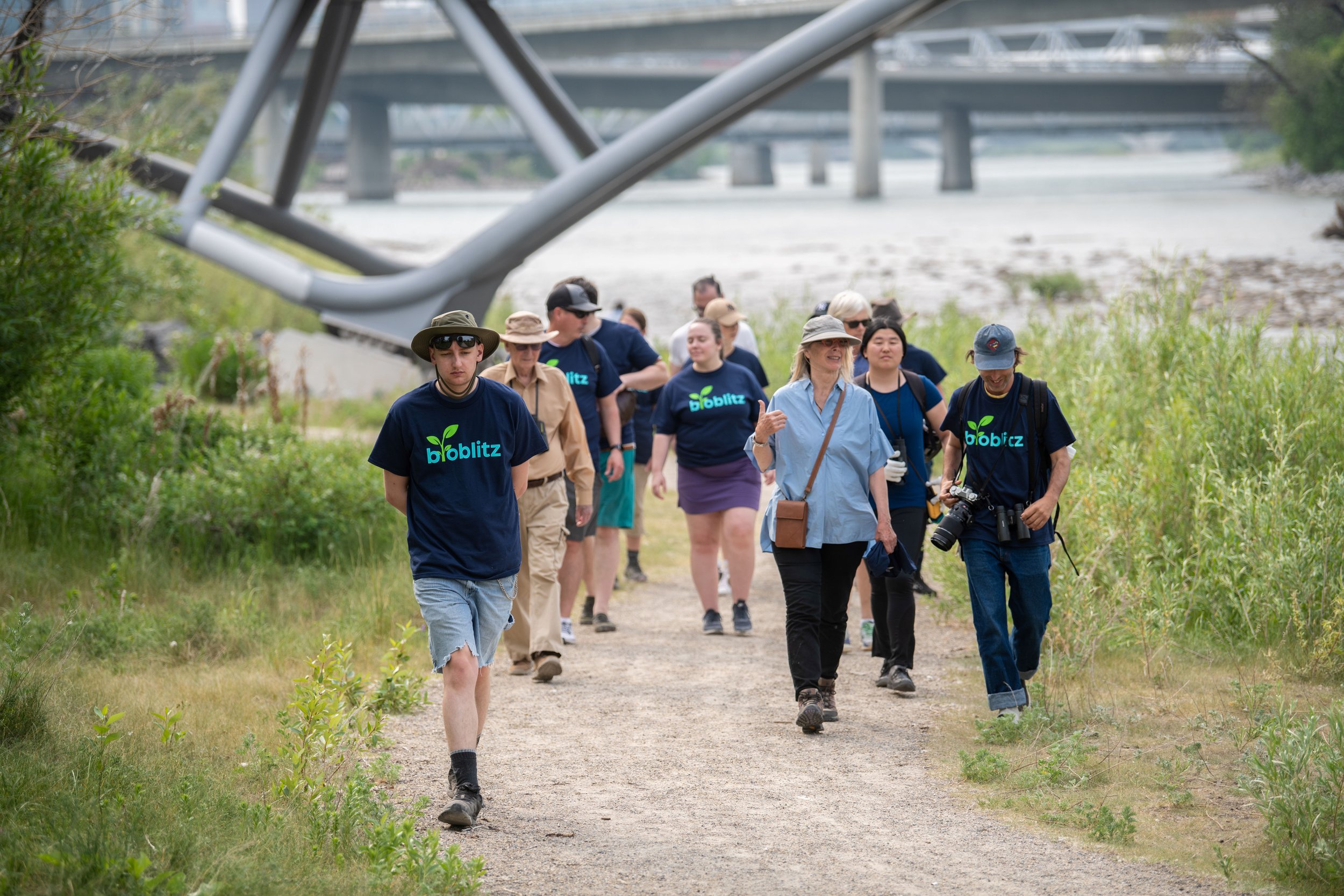BioBlitz: A Conversation with Dr. Steven Handel
Welcome to this special blog post where we'll be discussing the fascinating findings of the recent BioBlitz conducted at St. Patrick’s Island in June 2023. Joining us today is the lead biologist behind the survey, Dr. Steven Handel.
Dr. Steven Handel
EV: First, could you explain what a BioBlitz is and why it's important?
Dr. Handel: Absolutely! A BioBlitz is an intense survey of the biodiversity within a specific area over a 24-hour period. It's like a biodiversity "treasure hunt" where we try to identify and record all the living species present on a given day. BioBlitzes are important because they provide us with a snapshot of the species present in a particular location and help us understand the ecological health of an area. They are also great for engaging the public in appreciating and learning about the natural world around them.
EV: That sounds like a fantastic initiative! Can you tell us about the recent BioBlitz conducted at St. Patrick’s Island?
Dr. Handel: Certainly! We conducted the BioBlitz over a 24-hour period from June 9 to June 10, 2023. Our team of professional biologists from local universities and environmental groups, along with enthusiastic members of the public, participated in a series of walks throughout the park to record all the species we found during that time.
EV: And what were some of the exciting findings from the BioBlitz?
Dr. Handel: The results were truly remarkable! We identified a total of 433 species, including flowering plants, mosses, insects and other invertebrates, mammals, fishes, reptiles, and birds. Comparing these results to a previous BioBlitz conducted in 2013, we saw a significant increase in the number of species present on the island, a wonderful improvement in the park's biodiversity.
EV: How does this compare to what was found in the BioBlitz conducted in 2013?
In May, 2013 only 258 species were located. The large difference between the two surveys is attributable to improved landscape structure and maintenance as well as the sharp difference in weather between the two events.
Species found on the BioBlitz
2013 2023
Plants 61 91
Mosses, liverworts, lichen 19 27
Fungi - 2
Mammals 5 7
Birds 31 36
Fish and reptiles - 7
Invertebrates 142 263
TOTAL 258 433
EV: That's incredible progress! How does this increased biodiversity benefit the public and The City of Calgary?
Dr. Handel: Biodiversity offers many ecological services that are invaluable to the well-being of the city and its residents. These services include moderating local temperature, improving air quality, sequestering carbon, cleaning water runoff, providing habitats for species, and enhancing overall ecological resilience in the face of climate change. Moreover, the diverse wildlife and green spaces in the park offer recreational opportunities, contribute to physical and mental well-being, attract tourism, and inspire art and design.
EV: What finding surprised you the most?
Dr. Handel: The island is not large, and it is surrounded by urban neighborhoods that have been there since the European settlement in 1875. We were struck by the large number of species that can persist even with all the growing development of Calgary. It’s wonderful that nature can thrive with over a million people living on all sides of the island!
EV: Are there certain species that you located that are positive indicators of a healthy ecosystem?
Dr. Handel: The nesting osprey and the bald eagle hunting above the island speak to the improved water quality in the Bow River. Now those birds have fish to hunt for! The significant number of pollinators present also show that the rich plantings, part of the park’s redesign, are supplying much food (nectar, pollen) for these beneficial insects. They are critical to our agriculture areas and for home gardens, too.
EV: Where did you see the most significant change between the 2 BioBlitzes?
Dr. Handel: The number of plant species on the island has grown significantly in the last 10 years. The stunning mature balsam poplar trees are the major canopy species. The plant species found that were not present in 2013 have several origins, from proactive planting by the landscape architects to seed deposition through birds, wind, and water currents. Most striking to the plant investigators was the rich community on the western tip of the island which was bare gravel 10 years ago and the complex plant community of herbaceous and woody species in the Lowland Channel which once was mere mowed grass.
EV: Is there anything unique about St. Patrick’s Island compared to other areas you’ve studied?
Dr. Handel: It is wonderful to have such a diversity of habitats, so close to a major city. The Bow River flows down from your great national parks, so we have a mixture of aquatic species as well as the rich terrestrial communities of plants and animals, right through the middle of Calgary. Very few cities have this high biodiversity, cutting through their center.
EV: How would you suggest the biodiversity of SPI compares to other parks you’ve seen that reside so close to a busy downtown core?
Dr. Handel: Calgary is linked to the living resources around it, the Bow, the Elbow River and its habitats, and the other public parks nearby. These connections, the “landscape ecology,” are critical for long term resilience. Even if new stresses occur, the life on the island should have a great chance to recovery because the island is part of a diverse wider area. As people continue to plant native plant species in their yards and around their work places, these links will get even stronger.
EV: It's amazing to see how nature's diversity can have such positive impacts on the community! What recommendations do you have to build on the success of this BioBlitz?
Dr. Handel: The BioBlitz has shown us the potential for St. Patrick's Island to become a hub for environmental education and urban ecology experiences. We encourage expanding ecological programming in the park, engaging people of all ages to learn and appreciate the natural world. There are some wonderful nature groups in Calgary; St. Patrick’s Island can be a center for their outreach and continuing investigations. Additionally, ongoing management efforts are needed to tackle invasive plant and insect species and to maintain the park's ecological health. Nature keeps changing, not always for the best!
EV: And there you have it, folks! The St. Patrick’s Island Park BioBlitz has revealed a thriving and diverse ecosystem that not only benefits the environment but also enhances the lives of Calgary residents. Stay tuned for more updates and exciting developments in East Village!





